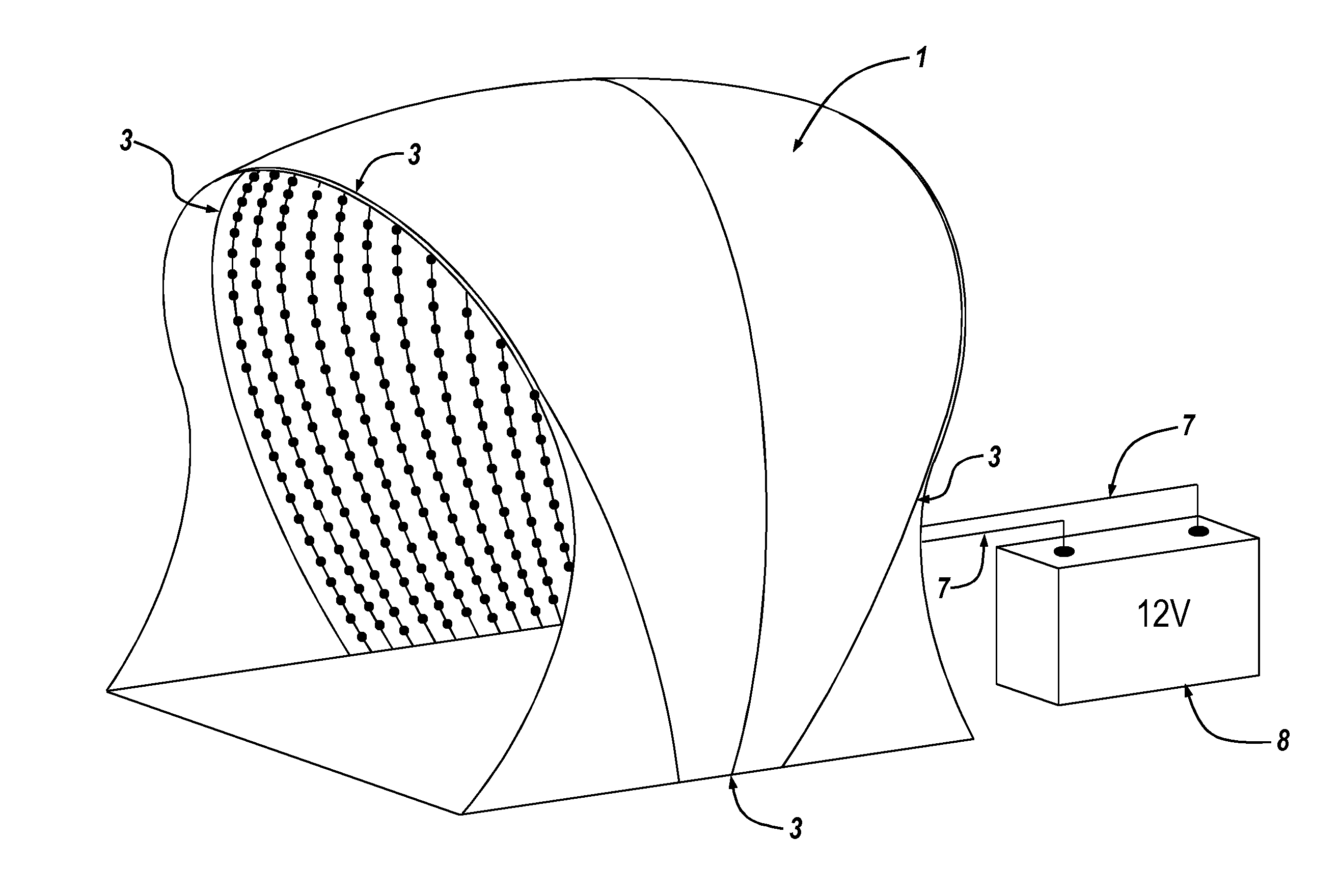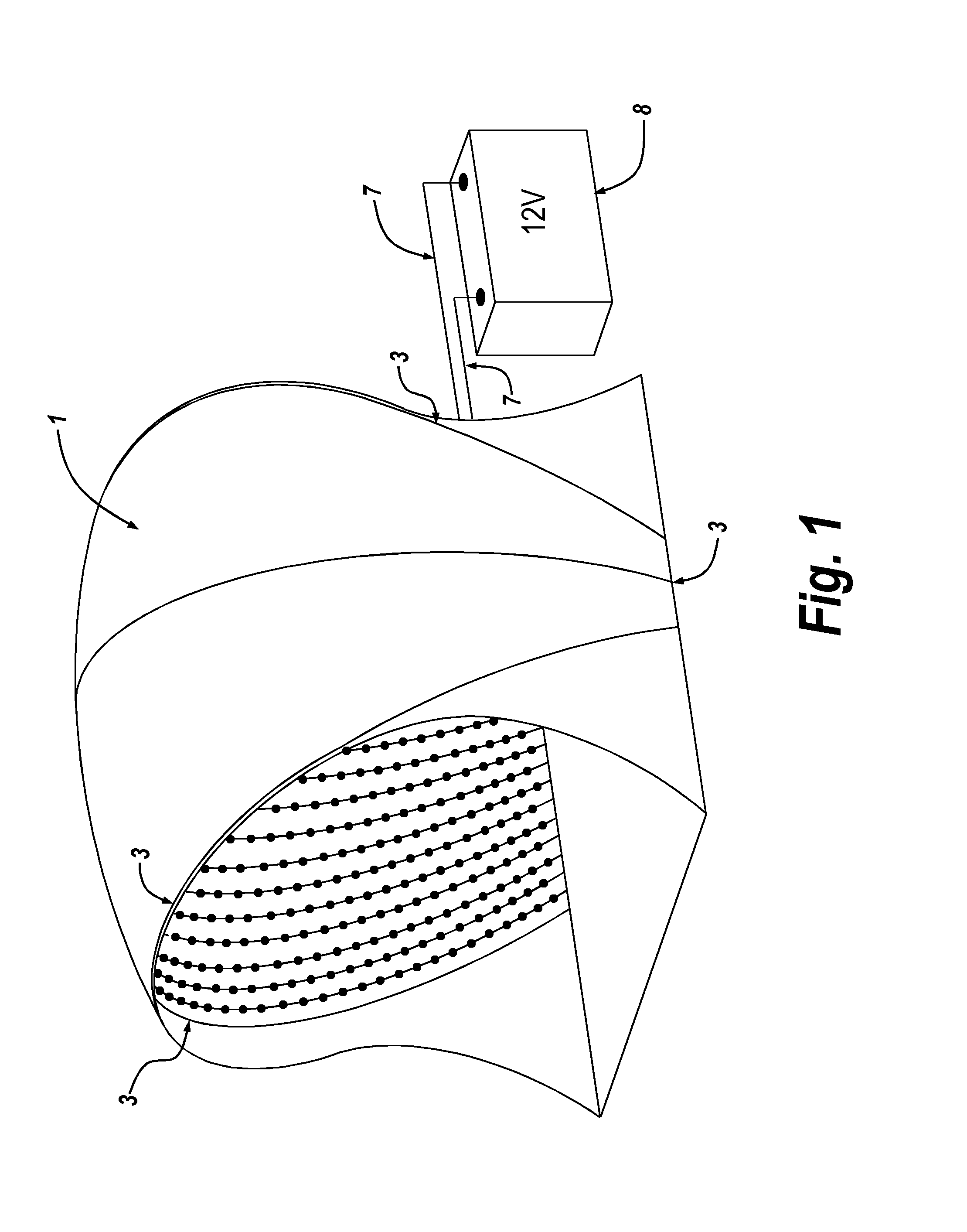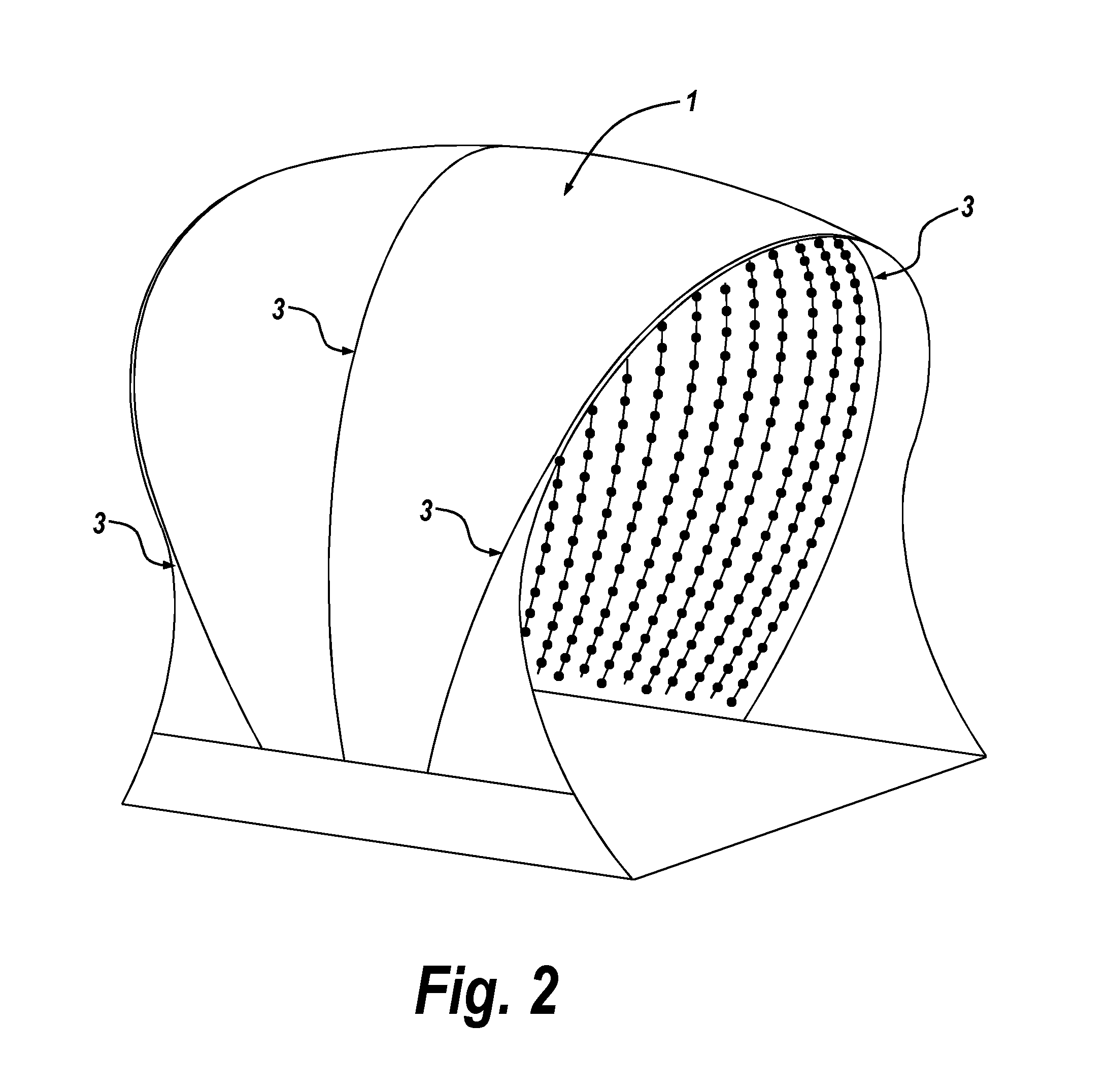Portable phototherapy device
a technology of light-emitting devices and phototherapy, which is applied in the field of portable light-emitting devices, can solve the problems of affecting the efficacy and/or utility of treatments, affecting the safety of patients, etc., and achieves the effect of convenient assembly and effective, efficient and effectiv
- Summary
- Abstract
- Description
- Claims
- Application Information
AI Technical Summary
Benefits of technology
Problems solved by technology
Method used
Image
Examples
example 1
Construction of the BILI-HUT
[0051]The non-limiting portable phototherapy device herein exemplified is specifically designed for the treatment of jaundice (hyperbilirubinemia) in newborn infants. This embodiment of the phototherapy device, the “BILI-HUT”, is specifically designed for use in remote areas, where access to hospitals, clinics, and even line power is extremely limited.
[0052]As stated earlier, phototherapy devices to treat infant jaundice are difficult to use in low resource areas because they are rigid, heavy, and rely on line power. The invention claimed here solves this problem. This invention delivers therapeutic phototherapy by means of low energy, narrow wavelength, LED lighting. Energy requirement is further reduced by arranging the lights in an arch or curve and by the use of reflective materials. Problems of weight, rigidity and space are solved by use of a freestanding, flexible, collapsible tent, the BILI-HUT.
[0053]Current phototherapy devices rely on line power...
PUM
 Login to View More
Login to View More Abstract
Description
Claims
Application Information
 Login to View More
Login to View More - R&D
- Intellectual Property
- Life Sciences
- Materials
- Tech Scout
- Unparalleled Data Quality
- Higher Quality Content
- 60% Fewer Hallucinations
Browse by: Latest US Patents, China's latest patents, Technical Efficacy Thesaurus, Application Domain, Technology Topic, Popular Technical Reports.
© 2025 PatSnap. All rights reserved.Legal|Privacy policy|Modern Slavery Act Transparency Statement|Sitemap|About US| Contact US: help@patsnap.com



